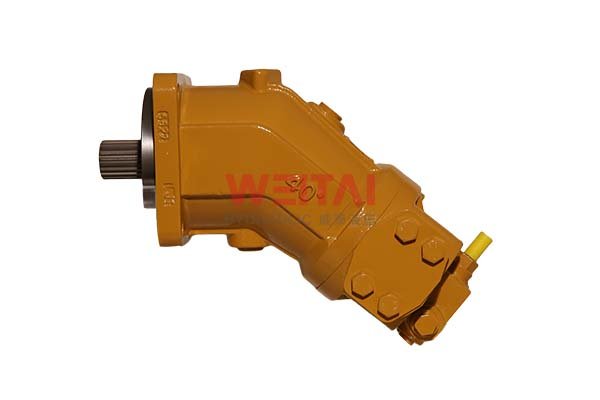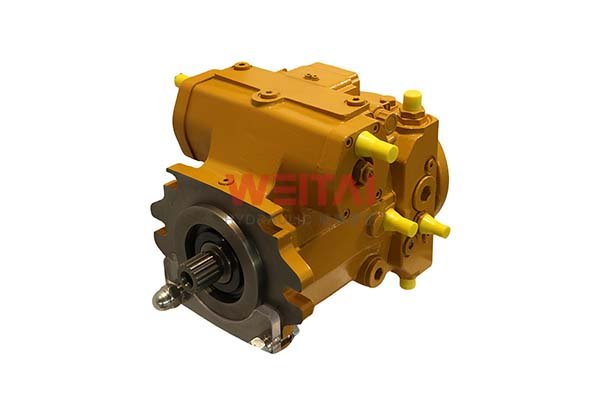Comparing Variable Displacement and Fixed Displacement Pumps
When designing or maintaining hydraulic systems, one of the most critical decisions engineers face is choosing the right type of hydraulic pump. The choice often boils down to two main categories: variable displacement pumps and fixed displacement pumps. Each type has its unique characteristics, advantages, and best-use scenarios. Understanding the differences between these two pump types is essential for optimizing hydraulic system performance, efficiency, and cost-effectiveness.
What Are Hydraulic Pumps?
Hydraulic pumps convert mechanical energy into hydraulic energy by moving fluid within a system. This fluid movement creates the pressure and flow necessary to power various hydraulic components, such as cylinders, motors, and valves. The way a pump displaces fluid determines whether it is classified as a fixed displacement or variable displacement pump.
Fixed Displacement Pumps: Consistency and Simplicity
A fixed displacement pump delivers a constant flow rate for each cycle, regardless of the load or pressure demands of the hydraulic system. This consistency is due to the pump's internal design, which does not allow for any adjustment in the volume of fluid displaced per rotation of the pump shaft.

Advantages of Fixed Displacement Pumps
Simplicity and Reliability
Fixed displacement pumps are simpler in design, which generally makes them more reliable and easier to maintain. Fewer moving parts mean fewer points of potential failure.Lower Initial Cost
Due to their straightforward design, fixed displacement pumps are usually less expensive to manufacture and purchase. This makes them an attractive option for systems where budget constraints are a primary concern.Consistent Performance
The constant flow rate of fixed displacement pumps ensures predictable performance, which can be advantageous in applications where the hydraulic demand is steady and unchanging.Ease of Maintenance
The simpler design of fixed displacement pumps translates into easier and less frequent maintenance. Fewer parts mean that diagnosing and fixing issues can be quicker and more straightforward.
Best Applications for Fixed Displacement Pumps
Fixed displacement pumps are ideal for systems where the hydraulic load is relatively constant, such as in certain industrial machines, agricultural equipment, and basic mobile machinery. They are also well-suited for applications where cost and simplicity are more important than efficiency and precision.
Variable Displacement Pumps: Flexibility and Efficiency
Variable displacement pumps, as the name suggests, can adjust the flow rate and pressure they deliver based on the system's needs. This adjustability is achieved through mechanisms that alter the internal geometry of the pump, such as changing the angle of a swash plate or repositioning pistons within the pump housing.

Advantages of Variable Displacement Pumps
Energy Efficiency
By adjusting flow and pressure to match the system's actual requirements, variable displacement pumps can significantly reduce energy consumption, leading to lower operational costs.Precise Control
These pumps offer fine-tuned control over hydraulic functions, making them ideal for applications where precise movement or speed is required, such as in robotics, aerospace, and advanced manufacturing systems.Reduced Heat Generation
Variable displacement pumps produce less excess flow, reducing the amount of heat generated within the system. This leads to a cooler operating environment, which can extend the life of the hydraulic components.Versatility
The ability to adjust flow and pressure on demand makes variable displacement pumps highly versatile, allowing them to be used in a wide range of applications, from industrial machinery to mobile equipment.
Best Applications for Variable Displacement Pumps
Variable displacement pumps are best suited for systems where the hydraulic load varies frequently or where precise control and efficiency are paramount. They are commonly used in mobile machinery, aerospace systems, and complex industrial processes that demand dynamic responses to changing conditions.
Comparing the Two: Which Is Right for Your System?
When deciding between a fixed displacement pump and a variable displacement pump, consider the following factors:
System Requirements
If your system has a consistent demand for hydraulic power, a fixed displacement pump may be sufficient. However, if your system experiences varying loads or requires precise control, a variable displacement pump is likely the better choice.Energy Efficiency
For systems where energy efficiency is a priority, particularly in applications with fluctuating loads, variable displacement pumps offer significant advantages by minimizing energy waste.Cost Considerations
Fixed displacement pumps are generally more affordable upfront, making them ideal for budget-conscious projects. Variable displacement pumps, while more expensive initially, can offer cost savings over time through improved efficiency and reduced energy consumption.Maintenance and Reliability
Fixed displacement pumps tend to be easier to maintain and more reliable due to their simpler design. If maintenance simplicity is a priority, a fixed displacement pump may be the better option.
Conclusion
Choosing between a variable displacement pump and a fixed displacement pump depends on your specific application needs, budget, and performance requirements. Fixed displacement pumps offer simplicity, reliability, and cost-effectiveness for systems with steady hydraulic demands. In contrast, variable displacement pumps provide superior efficiency, control, and versatility in applications where conditions fluctuate. Understanding these differences will help you make an informed decision, ensuring your hydraulic system operates at peak performance and efficiency.